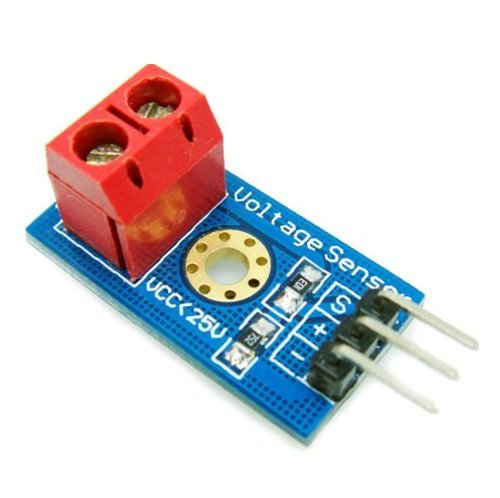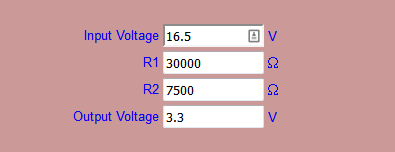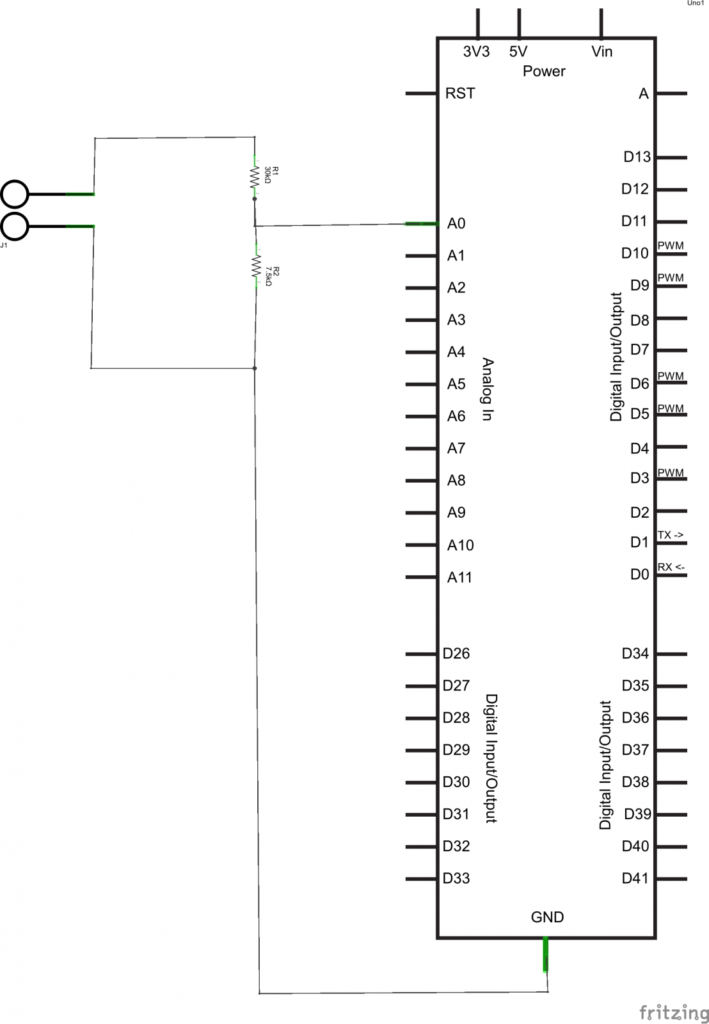On one of my recent visits to an electronics website I saw this voltage sensor, intrigued I bought it and wondered how it worked, there didn’t seem much to it.
As a Chipkit Uno is limited to 3.3v maximum on its I/O lines I could see what was being attempted here, in fact you can quite easily build this circuit. This is simply a voltage divider with a 30k and 7k5 resistors. Basically its a 5:1 divider, so bearing in mind the 3.3v input limit, this circuit allows you to go up to 16v. You can punch these numbers into a voltage divider calculator, here you can see I’ve done this for you
There are a couple of connections
Vcc and GND – This is your DC power source, watch the polarity as it shares a common ground with your Arduino
S: This connects to your Arduino analog input, we use A1 you can use another if you wish
–: This connects to your Arduino ground.
+: This is not used
Schematic
Code
[codesyntax lang=”cpp”]
int analogInput = A1; // I used A1
float vout = 0.0;
float vin = 0.0;
float R1 = 30000.0; //30k
float R2 = 7500.0; //7500 ohm resistor, I tweaked this
int value = 0;
void setup()
{
pinMode(analogInput, INPUT);
Serial.begin(9600);
Serial.println("BASIC DC VOLTMETER");
}
void loop()
{
// read the value at analog input
value = analogRead(analogInput);
vout = (value * 3.3) / 1024.0;
vin = vout / (R2/(R1+R2));
Serial.print("Voltage = ");
Serial.println(vin,2);
delay(500);
}
[/codesyntax]




